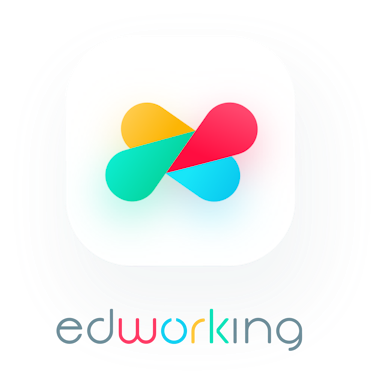The way we work has undergone a massive transformation. Gone are the days when office chatter around the water cooler or spontaneous brainstorming sessions in meeting rooms were the norm. In today’s global landscape, remote work has become more than just a trend—it's a necessity. And at the heart of it all lies one powerful element: remote team communication.
But let's face it—communicating effectively while miles apart is no walk in the park. When your team is spread across different time zones, cultural backgrounds, and devices, aligning everyone under one goal can feel like herding digital cats. Misunderstandings happen. Deadlines get missed. And morale? It can nosedive fast.

So how do successful teams keep the gears turning smoothly despite the distance? It’s not about sending more emails or scheduling endless Zoom calls. It’s about optimizing how you communicate—being intentional, smart, and a little bit strategic.
In this blog, we’ll walk you through the what, why, and how of effective remote team communication. From tools and techniques to game-changing best practices, you’ll learn exactly how to keep your remote crew not just connected, but truly productive.
 Foundations of Effective Remote Team Communication
Foundations of Effective Remote Team Communication
Understanding Communication Barriers
You know that feeling when someone reads your message and totally misinterprets it? Now multiply that by time zones, different cultures, and maybe even a spotty Wi-Fi connection—and you’ve got a glimpse into the everyday reality of remote teams.
Here are some of the biggest culprits:
- Time Zone Disparities – You’re starting your day while someone else is logging off. This makes live collaboration tricky and can cause frustrating delays.
- Cultural and Language Differences – Communication norms vary wildly. What's considered polite in one culture may come off as cold or vague in another.
- Tech Overload or Gaps – Not everyone has access to the same tools, bandwidth, or comfort with new platforms.
Even with the best intentions, these challenges can create silos, slow progress, and lead to misunderstandings that could’ve been avoided with just a little foresight.
The Cost of Miscommunication
When communication breaks down, productivity suffers. Period. Teams waste time clarifying tasks, redoing work, or waiting for responses that never come.
Let’s put it in real terms:
- Deadlines are missed because people didn’t understand priorities.
- Team members feel isolated or out of the loop.
- Morale dips as frustration rises.
The main difference between a productive remote team and a dysfunctional one often comes down to communication clarity.
Common Communication Barriers in Remote Teams
Remote communication has its fair share of pitfalls, many of which are easy to overlook until they start affecting your team's performance. These barriers can quietly chip away at productivity and trust if left unaddressed. Here are some of the most common challenges remote teams face:
- Lack of non-verbal cues
- Overreliance on emails or messages
- Misaligned expectations
- Unclear roles or responsibilities
- Delayed feedback cycles
- Tech fatigue or tool inconsistency
If these sound familiar, don’t worry—you’re not alone. The good news is that with the right strategy (and a few tools), you can turn these challenges into strengths.
 Tools That Improve Remote Team Communication
Tools That Improve Remote Team Communication

Synchronous vs. Asynchronous Tools
Let’s start with a simple distinction that many teams overlook: synchronous versus asynchronous communication. Think of synchronous tools like a real-time conversation—instant messaging, phone calls, or video meetings. Asynchronous tools, on the other hand, allow communication without the pressure to respond immediately—like emails, recorded updates, or task comments.
The key is not choosing one over the other, but knowing when to use each. Quick updates or urgent issues? Go synchronous. Need thoughtful feedback or updates outside working hours? Async wins.
Using both types intentionally is how remote teams strike a balance between responsiveness and flexibility.
Recommended Communication Tools
You’ve probably heard of (or used) a dozen tools by now, but here’s what we’ve found works best for remote teams:
- Slack or Microsoft Teams – Ideal for quick conversations, file sharing, and integrations.
- Zoom or Google Meet – Great for face-to-face time and discussions that need nuance.
- Project management tools like Trello, Asana, or Edworking – Keep everything organized and documented.
- Loom or other video message tools – Perfect for async communication with a personal touch.
The best remote teams don’t use every tool under the sun—they use a few great ones well.

Collaboration Platforms That Bridge Gaps
The new wave of remote work platforms does more than chat and video. Tools like Edworking combine task management, chat, video calls, and file sharing in one place. This means fewer logins, fewer missed messages, and more time doing actual work.
When your communication lives alongside your tasks, everything just... clicks.
 Best Practices to Boost Communication and Productivity
Best Practices to Boost Communication and Productivity
Set Clear Communication Guidelines
Ever joined a remote team where no one knew which tool to use—or worse, when to use it? Without clear communication rules, chaos takes over.
Establishing simple guidelines makes a big difference:
- Decide which channels are for what (e.g., Slack for quick chats, Notion or Edworking for project updates).
- Define expected response times for messages.
- Set meeting rules: who attends, when they happen, and how they’re run.
Clear expectations create clarity. And clarity boosts productivity.
Create a Feedback Culture
You can’t fix what you don’t talk about. And in remote teams, silence is rarely golden—it’s often a sign of disengagement.
Encouraging regular, honest feedback helps catch problems early and build trust. A few ways to do this:
- Use weekly retros or standups to share wins and blockers.
- Send short pulse surveys or feedback forms.
- Offer anonymous suggestion boxes (yes, even digitally).
Feedback doesn’t always need to be formal—it just needs to be consistent.
Schedule Communication Smartly
Not all communication needs to happen in real time. In fact, smart scheduling is what separates busy teams from effective ones.
Here’s how high-performing remote teams manage their time:
- Use overlapping hours wisely. Schedule meetings only when everyone can contribute.
- Batch responses instead of being “always on.”
- Respect different time zones and don’t expect immediate replies after hours.
Being available doesn’t mean being productive. Smart scheduling respects both productivity and people.
Best Practices for Managing Remote Communication
Managing remote communication effectively comes down to a few smart habits. Keeping meetings short and focused helps avoid fatigue and keeps discussions efficient. Documenting decisions ensures everyone stays aligned, even if they couldn’t join live. Encouraging asynchronous updates allows team members to contribute thoughtfully without constant interruptions. Centralizing discussions in project spaces helps everyone stay organized and find what they need quickly. It's also essential to provide communication training during onboarding so new team members feel confident from day one. And finally, recognizing small wins along the way can boost morale and reinforce a positive communication rhythm.
 Building a Communication-First Culture
Building a Communication-First Culture

Leading by Example
Culture doesn’t start with rules—it starts with behavior. When team leaders and managers make open, respectful, and consistent communication a daily habit, the rest of the team naturally follows.
If you’re in a leadership position, your communication style sets the tone. When you regularly share updates, invite input from all voices—not just the most outspoken—and own up to your own communication missteps, you create a safe, open environment. That kind of transparency tells your team it's okay to speak up, ask questions, or clarify things without fear of being judged.
Onboarding and Training
When a new teammate joins, the way you introduce them to your team’s communication style can shape their entire experience. Instead of letting them figure things out alone, give them a clear understanding of how your team talks, shares information, and collaborates.
Explain the core tools your team uses, how each one fits into your workflows, and who they can turn to if they’re ever unsure about how or when to communicate something. Regular refreshers and open forums are also helpful, even for seasoned team members. After all, even strong communicators benefit from a reminder of the team's values and evolving practices.
When communication is treated as a shared responsibility—not just a checklist item—it becomes the foundation for trust, efficiency, and long-term success.
 How Edworking Enhances Remote Team Communication
How Edworking Enhances Remote Team Communication


Integrated Chat and Task Discussions
One of the biggest challenges in remote collaboration is flipping between different tools just to stay in the loop. Edworking solves this by embedding real-time chat directly into its task management system. Conversations happen where the work happens. No more lost context or searching through email threads to figure out what someone meant.
Team members can comment directly on tasks, ping each other for quick clarifications, and keep discussions focused and organized. It’s a smoother, more natural way to communicate—especially when you’re juggling multiple projects.
Seamless Video Conferencing
Sometimes, you just need to talk it out. Edworking makes that easy with built-in video conferencing that doesn’t require switching apps. Whether it’s a one-on-one, a team meeting, or a quick check-in, you can launch a call right from the platform.
Even better, the interface is clean and intuitive, allowing screen sharing, external participant invites, and full control over camera and mic settings. It brings people face-to-face without the usual tech friction.
Stories and Workspaces
Quick updates matter, especially when you don’t want to flood everyone’s inbox. That’s where Edworking’s Stories feature comes in. Inspired by social media but designed for work, it lets team members post short updates, share wins, or flag issues in a lightweight, visible way.
Pair that with topic-based Workspaces—dedicated spaces for focused collaboration—and you’ve got a setup that encourages natural communication without overload.
Built-in AI Tools for Communication
Clarity is everything, and Edworking’s AI tools help teams communicate more clearly and efficiently. Whether you’re writing a project update, drafting a document, or just trying to rephrase a tricky message, the AI assistant is ready to jump in.
It’s especially useful for non-native English speakers, content teams, or anyone looking to polish their communication without wasting time. You get smarter writing with less effort—directly inside your workspace.
With these features, Edworking turns communication from a chore into a strength. It keeps your team aligned, focused, and connected—all in one place.
 Conclusion
Conclusion
Remote work isn’t just about logging in from a different location—it’s about staying connected, aligned, and productive despite the distance. And that only happens when communication is intentional and optimized.
We've seen how poor communication can drain team energy, stall progress, and create confusion. But it doesn’t have to be that way. With the right tools, habits, and culture in place, your team can go from simply “working remotely” to working smarter, faster, and more collaboratively.
The main difference between a thriving remote team and a struggling one often comes down to how well they communicate. It's not about having more meetings or using the fanciest tools—it’s about creating an environment where clarity, trust, and connection come naturally.
Start with the basics: align on tools, define your communication rhythm, and reinforce it with a culture that values openness and feedback. Whether you're leading a team or contributing to one, these changes will pay off in stronger relationships, faster execution, and greater team satisfaction.
Remote doesn’t have to mean distant. When your communication works, everything else follows.







